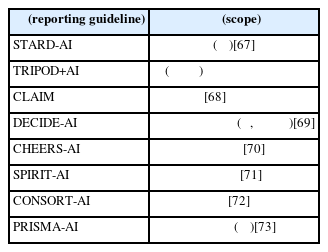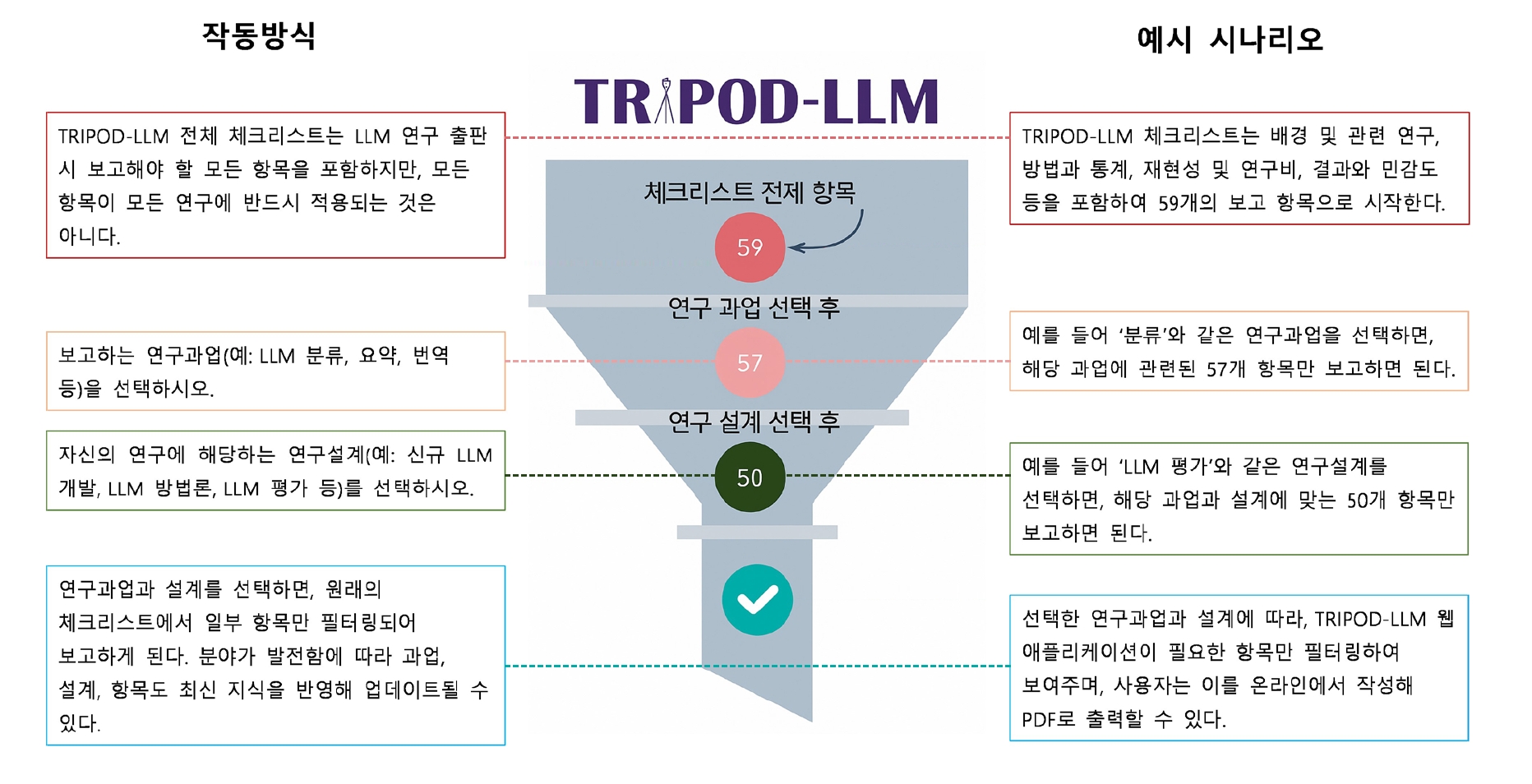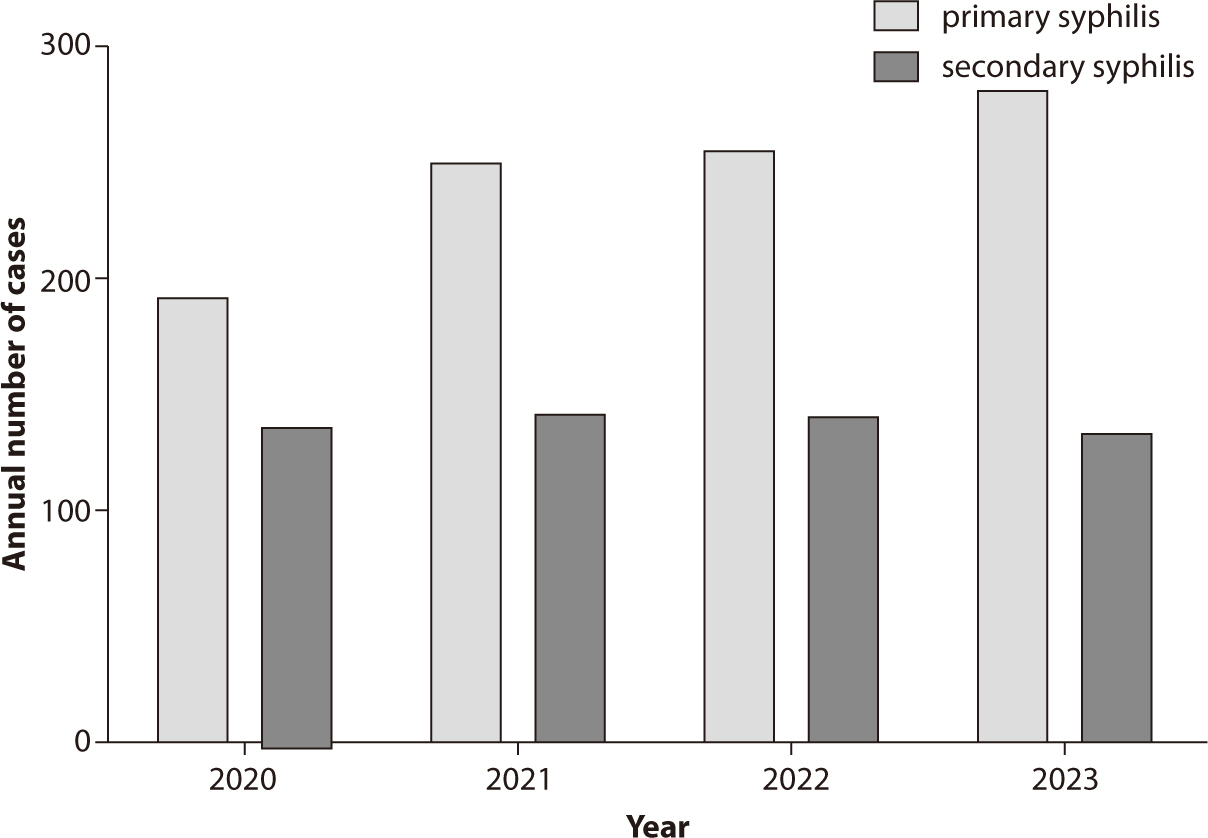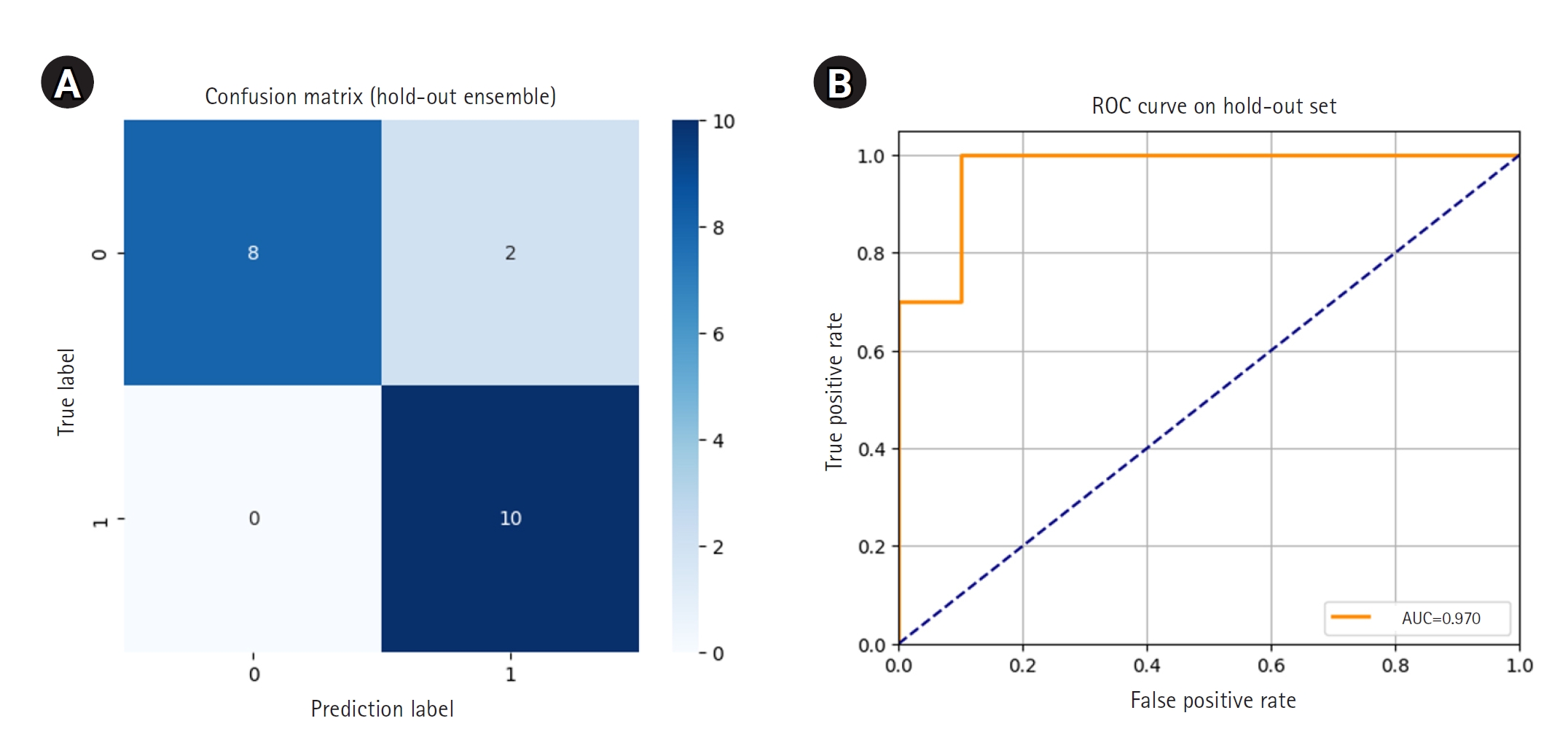Most-cited are based on citations from 2023 ~ 2025.

Citations

Citations

 , Won Kim
, Won Kim
Understanding the effects of sex and sex differences on liver health and disease is crucial for individualized healthcare and informed decision-making for patients with liver disease. The impact of sex on liver disease varies according to its etiology. Women have a lower prevalence of metabolic dysfunction-associated steatotic liver disease (MASLD) than men. However, postmenopausal women face a higher risk of advanced liver fibrosis due to hormonal influences. Sex differences affect the pathogenesis of MASLD, which involves a complex process involving several factors such as hormones, obesity, and the gut microbiome. Furthermore, sex-related differences in the development of MASLDrelated hepatocellular carcinoma have been observed. The sex-specific characteristics of MASLD necessitate an individualized management approach based on scientific evidence. However, research in this area has been lacking. This article reviews the current understanding of sex differences in MASLD.
Citations

 , Eun-Kyoung Pang
, Eun-Kyoung Pang
Citations


Coronary artery disease (CAD) remains the leading cause of mortality worldwide, driven primarily by atherogenesis. Recent efforts to understand sex differences in CAD have revealed distinct patterns in disease burden, risk factors, and clinical presentations. This review examines these sex differences in CAD, underscoring the importance of customized diagnostic and management strategies. Although men typically have higher rates of CAD prevalence and incidence, women face unique challenges, such as delayed diagnosis, atypical symptoms, and lower rates of medication prescription. Hormonal, genetic, and lifestyle factors all play a role in these disparities, with estrogen notably reducing CAD risk in women. Nontraditional risk factors, including chronic inflammation, psychological stress, socioeconomic status, and reproductive history, also contribute to CAD development and are often neglected in clinical settings. Addressing these differences requires increased awareness, more accurate diagnosis, and equitable healthcare access for both sexes. Furthermore, greater inclusion of women in CAD research is essential to better understand sex-specific mechanisms and optimize treatment outcomes. Personalizing CAD management based on sex-specific knowledge has the potential to improve prognosis and decrease disease incidence for both men and women.
Citations


Citations


FLASH radiotherapy (FLASH-RT) is an innovative approach that delivers ultra-high dose rates exceeding 40 Gy in less than a second, aiming to widen the therapeutic window by minimizing damage to normal tissue while maintaining tumor control. This review explores the advancements, mechanisms, and clinical applications of FLASH-RT across various radiation sources. Electrons have been predominantly used due to technical feasibility, but their limited penetration depth restricts clinical application. Protons, offering deeper tissue penetration, are considered promising for treating deep-seated tumors despite challenges in beam delivery. Preclinical studies demonstrate that FLASH-RT reduces normal tissue toxicity in the lung, brain, skin, intestine, and heart without compromising antitumor efficacy. The mechanisms underlying the FLASH effect may involve oxygen depletion leading to transient hypoxia, reduced DNA damage in normal tissues, and modulation of immune and inflammatory responses. However, these mechanisms are incompletely understood, and inconsistent results across studies highlight the need for further research. Initial clinical studies, including treatment of cutaneous lymphoma and bone metastases, indicate the feasibility and potential benefits of FLASH-RT in patients. Challenges for clinical implementation include technical issues in dosimetry accuracy at ultra-high dose rates, adaptations in treatment planning systems, beam delivery methods, and economic considerations due to specialized equipment requirements. Future directions will involve comprehensive preclinical studies to optimize irradiation parameters, large-scale clinical trials to establish standardized protocols, and technological advancements to overcome limitations. FLASH-RT holds the potential to revolutionize radiotherapy by reducing normal tissue toxicity and improving therapeutic outcomes, but significant research is required for real-world clinical applications.
Citations


Citations


Citations


Citations


Citations

 , Erik von Elm
, Erik von Elm , Douglas G. Altman
, Douglas G. Altman , Peter C. Gøtzsche, Cynthia D. Mulrow
, Peter C. Gøtzsche, Cynthia D. Mulrow , Stuart J. Pocock
, Stuart J. Pocock , Charles Poole
, Charles Poole , James J. Schlesselman
, James J. Schlesselman , Matthias Egger
, Matthias Egger
의학 연구의 대부분은 관찰 연구이다. 관찰 연구의 보고는 종종 불충분한 품질을 보이기도 한다. 부실한 보고는 연구의 강점과 약점을 평가하고 연구
결과의 일반화 가능성을 평가하는 데 방해가 된다. 방법론 전문가, 연구자, 편집자 그룹은 경험적 근거와 이론적 고려 사항을 고려하여 관찰 연구
보고의 질을 개선하기 위한 역학 STROBE 권고안을 개발했다. STROBE statement은 논문의 제목, 초록, 서론, 방법, 결과 및
토론 부분에 대한 22개 항목의 체크리스트로 구성되어 있다. 18개 항목은 코호트연구, 환자 대조군 연구, 단면연구에 공통으로 적용되며, 4개
항목은 세 가지 연구설계 각각에 따라 다르다. STROBE statement는 저자에게 관찰 연구에 대한 보고를 개선하는 방법에 대한 지침을
제공하고 심사자, 편집자 및 독자가 연구를 비판적으로 평가하고 해석하는 데 도움이 된다. 이 설명 문서는 STROBE statement의 사용,
이해 및 보급을 향상 시키는 것이 목적이다. 각 체크리스트 항목의 의미와 근거가 제시되어 있다. 각 항목에 대해 하나 또는 여러 개의 출판된
예시 논문과 가능한 경우 관련 경험적 연구 및 방법론 문헌에 대한 내용이 참고사항으로 제공된다. 유용한 흐름도의 예도 포함되어 있다. 본 문서
및 관련 웹사이트(
Citations


This study analyzed drug-induced death statistics in Korea between 2011 and 2021.
Cause-of-death statistics data from Statistics Korea were examined based on the Korean Standard Classification of Diseases and Causes of Death and the International Statistical Classification of Diseases and Related Health Problems, 10th revision.
In 2021, there were 559 drug-induced deaths, marking a 172.7% increase compared to 2011, which recorded 205 deaths. The rate of drug-induced deaths per 100,000 people was 1.1 in 2021, up 153.6% from 0.4 in 2011. The mortality rate for men aged 25−34 years and women aged 35−44 years each increased fourfold from 2011 to 2021: from 0.3 to 1.2 for the former and 0.3 to 1.3 for the latter. Of the drug-induced deaths in 2021, 75.0% (419/559) were due to intentional self-harm, and 10.4% (58/559) were accidental. The number of deaths attributed to medical narcotics in 2021 was 169, a 5.5-fold increase from 2011. The most commonly implicated drugs in these deaths were sedative-hypnotic drugs, benzodiazepines, and opioids. Sedative-hypnotic drugs and benzodiazepines were frequently involved in cases of intentional self-harm, while opioids and psychostimulants were more often associated with accidental deaths.
The death rate from drug-induced causes is considerably lower in Korea than in the United States (1.1 vs. 29.2). However, the number of such deaths has increased recently. Since these deaths occur predominantly among younger age groups and are often the result of intentional self-harm, there is a clear need for systematic management and the implementation of targeted policies.
Citations

 , Jongmin Oh
, Jongmin Oh , Eunji Mun
, Eunji Mun , Jung Eun Choi
, Jung Eun Choi , Kyung Hee Kim
, Kyung Hee Kim , Ji Hyen Lee
, Ji Hyen Lee , Hae Soon Kim
, Hae Soon Kim , Eunhee Ha
, Eunhee Ha
The worldwide incidence of precocious puberty, which is associated with negative health outcomes, is increasing. Several studies have suggested that environmental factors contribute to the development of precocious puberty alongside genetic factors. Some epidemiological studies have provided limited evidence suggesting an association between exposure to air pollution and changes in pubertal development. This systematic review aimed to summarize existing evidence on the association between air pollution exposure and precocious puberty. Following the Preferred Reporting Items for Systematic reviews and Meta-Analyses guidelines, we searched two databases (PubMed and Web of Science) until August 2023. The included studies assessed the association between air pollutant exposure and the risk of precocious puberty, early menarche, or pubertal development. Two authors independently performed study selection and data extraction. A meta-analysis and analysis of the risk of bias were infeasible due to the limited number of studies and the heterogeneity among them. The literature search resulted in 184 studies, from which we included six studies with sample sizes ranging from 437 to 4,074 participants. The studies reported heterogeneous outcomes. Four studies found that increased exposure to air pollution was related to earlier pubertal onset. One study was inconclusive, and another suggested that air pollutant exposure may delay the onset of thelarche. Most studies suggest that exposure to air pollutants accelerates pubertal development; however, the results from the available studies are inconsistent. More extensive and well-designed longitudinal studies are required for a comprehensive understanding of the association between air pollution and precocious puberty.
Citations

 , Paola De Castro, Sera Tort, Mirjam Curno
, Paola De Castro, Sera Tort, Mirjam Curno Citations

 , Zahra Salimi
, Zahra Salimi , Fatemeh Zarei
, Fatemeh Zarei , Farshad Moradpour
, Farshad Moradpour , Mohammad Rasool Khazaei
, Mohammad Rasool Khazaei , Mozafar Khazaei
, Mozafar Khazaei , Maryam Pourjalili
, Maryam Pourjalili
Alzheimer disease (AD) is a common neurodegenerative disorder, characterized by memory impairment, dementia, and diminished cognitive function. This disease affects more than 20 million people worldwide. Amyloid beta (Aβ) plaques and neurofibrillary tangles (NFTs) are important pathological markers of AD. Multiple studies have indicated a potential association between elevated cholesterol levels and increased risk of AD, suggesting that lowering the cholesterol level could be a viable strategy for AD treatment or prevention. Statins, potent inhibitors of cholesterol synthesis, are widely used in clinical practice to decrease the plasma levels of LDL cholesterol in patients with hyperlipidemia. Statins are known to play a neuroprotective role in limiting Aβ pathology through cholesterol-lowering therapies. In addition to Aβ plaques and neurofibrillary tangles, the brains of AD patients exhibit signs of oxidative stress, neuroinflammatory responses, and synaptic disruption. Consequently, compounds with antioxidant, anti-inflammatory, and/or neuroprotective properties could be beneficial components of AD treatment strategies. In addition to lowering LDL cholesterol, statins have demonstrated therapeutic efficacy in various forms, including antioxidant, anti-inflammatory, and neuroprotective effects. These properties of statins are potential mechanisms underlying their beneficial effects in treating neurodegenerative diseases. Therefore, this review was conducted to provide an overview of the protective effects of statins against AD.
Citations


 , Karel G M Moons
, Karel G M Moons , Paula Dhiman
, Paula Dhiman , Richard D Riley
, Richard D Riley , Andrew L Beam
, Andrew L Beam , Ben Van Calster
, Ben Van Calster , Marzyeh Ghassemi
, Marzyeh Ghassemi , Xiaoxuan Liu
, Xiaoxuan Liu , Johannes B Reitsma
, Johannes B Reitsma , Maarten van Smeden
, Maarten van Smeden , Anne-Laure Boulesteix
, Anne-Laure Boulesteix , Jennifer Catherine Camaradou
, Jennifer Catherine Camaradou , Leo Anthony Celi
, Leo Anthony Celi , Spiros Denaxas
, Spiros Denaxas , Alastair K Denniston
, Alastair K Denniston , Ben Glocker
, Ben Glocker , Robert M Golub
, Robert M Golub , Hugh Harvey
, Hugh Harvey , Georg Heinze
, Georg Heinze , Michael M Hoffman
, Michael M Hoffman , André Pascal Kengne
, André Pascal Kengne , Emily Lam
, Emily Lam , Naomi Lee
, Naomi Lee , Elizabeth W Loder
, Elizabeth W Loder , Lena Maier-Hein
, Lena Maier-Hein , Bilal A Mateen
, Bilal A Mateen , Melissa D McCradden
, Melissa D McCradden , Lauren Oakden-Rayner
, Lauren Oakden-Rayner , Johan Ordish
, Johan Ordish , Richard Parnell
, Richard Parnell , Sherri Rose
, Sherri Rose , Karandeep Singh
, Karandeep Singh , Laure Wynants
, Laure Wynants , Patricia Logullo
, Patricia Logullo
Citations


 , Majid Afshar
, Majid Afshar , Saleem Ameen
, Saleem Ameen , Yindalon Aphinyanaphongs
, Yindalon Aphinyanaphongs , Shan Chen
, Shan Chen , Giovanni Cacciamani
, Giovanni Cacciamani , Dina Demner-Fushman
, Dina Demner-Fushman , Dmitriy Dligach
, Dmitriy Dligach , Roxana Daneshjou
, Roxana Daneshjou , Chrystinne Fernandes
, Chrystinne Fernandes , Lasse Hyldig Hansen
, Lasse Hyldig Hansen , Adam Landman
, Adam Landman , Lisa Lehmann
, Lisa Lehmann , Liam G. McCoy
, Liam G. McCoy , Timothy Miller
, Timothy Miller , Amy Moreno
, Amy Moreno , Nikolaj Munch
, Nikolaj Munch , David Restrepo
, David Restrepo , Guergana Savova
, Guergana Savova , Renato Umeton
, Renato Umeton , Judy Wawira Gichoya
, Judy Wawira Gichoya , Gary S. Collins
, Gary S. Collins , Karel G. M. Moons
, Karel G. M. Moons , Leo A. Celi
, Leo A. Celi , Danielle S. Bitterman
, Danielle S. Bitterman
Citations


Citations



Citations

This review examines the challenges associated with occupational disease surveillance in Korea, particularly emphasizing the limitations of current data sources such as the Industrial Accident Compensation Insurance (IACI) statistics and special health examinations. The IACI system undercounts cases due to its emphasis on severe diseases and restrictions on approvals. Special health examinations, although they cover a broad workforce, are constrained by their annual scheduling, which leads to missed acute illnesses and subclinical conditions. The paper also explores the history of occupational disease surveillance in Korea, highlighting the fragmented and disease-specific approach of earlier systems. The authors introduce the newly established Korea Occupational Disease Surveillance Center (KODSC), a comprehensive nationwide system designed to gather, analyze, and interpret data on occupational diseases through a network of regional centers. By incorporating hospital-based surveillance and focusing on acute poisonings and other sentinel events, the KODSC aims to overcome the limitations of previous systems and promote collaboration with various agencies. Although it is still in the early stages of implementation, the KODSC demonstrates potential for improving data accuracy and contributing valuable insights for public health policy.
Citations


Citations


 , Haeryoung Kim
, Haeryoung Kim
Hepatocellular carcinoma (HCC) remains a leading cause of cancer-related deaths
worldwide, with poor clinical outcomes due to challenges in early detection and
limited efficacy of current treatments such as receptor tyrosine kinase
inhibitors and immunotherapy. HCC exhibits significant heterogeneity at both
histopathological and molecular levels, complicating its management but offering
potential for personalized therapeutic approaches. This review outlines the
morpho-molecular heterogeneity of HCC and summarizes various histological
subtypes, including steatohepatitic, clear cell, macrotrabecular-massive,
scirrhous, lymphocyte-rich, and fibrolamellar HCCs. Each subtype possesses
distinct clinical, histological, and molecular features; for instance,
steatohepatitic HCC is associated with metabolic dysfunction and shows
IL-6/JAK/STAT activation, while clear cell HCCs often have
Citations



Sexually transmitted infections (STIs) continue to pose significant public health
challenges in Korea, with syphilis, gonorrhea, chlamydia,
Citations


 , YoungMoon Goh
, YoungMoon Goh , Jungwon Kwak
, Jungwon Kwak
Artificial intelligence (AI) is rapidly transforming various medical fields, including radiation oncology. This review explores the integration of AI into radiation oncology, highlighting both challenges and opportunities. AI can improve the precision, efficiency, and outcomes of radiation therapy by optimizing treatment planning, enhancing image analysis, facilitating adaptive radiation therapy, and enabling predictive analytics. Through the analysis of large datasets to identify optimal treatment parameters, AI can automate complex tasks, reduce planning time, and improve accuracy. In image analysis, AI-driven techniques enhance tumor detection and segmentation by processing data from CT, MRI, and PET scans to enable precise tumor delineation. In adaptive radiation therapy, AI is beneficial because it allows real-time adjustments to treatment plans based on changes in patient anatomy and tumor size, thereby improving treatment accuracy and effectiveness. Predictive analytics using historical patient data can predict treatment outcomes and potential complications, guiding clinical decision-making and enabling more personalized treatment strategies. Challenges to AI adoption in radiation oncology include ensuring data quality and quantity, achieving interoperability and standardization, addressing regulatory and ethical considerations, and overcoming resistance to clinical implementation. Collaboration among researchers, clinicians, data scientists, and industry stakeholders is crucial to overcoming these obstacles. By addressing these challenges, AI can drive advancements in radiation therapy, improving patient care and operational efficiencies. This review presents an overview of the current state of AI integration in radiation oncology and insights into future directions for research and clinical practice.
Citations


Citations


The availability of combined antiretroviral therapy has significantly reduced the number of new HIV infections and the associated mortality, and HIV infection has become a chronic disease with long-term survival. In Korea, more than 1,000 new HIV infections have been registered annually since 2013. After peaking at 1,223 in 2019, the number of new infections decreased between 2020 and 2023. In 2023, the majority of newly HIV-infected people were men, and the proportions of young people under 40 years, homosexual contacts and foreigners increased. Acquired immunodeficiency syndrome (AIDS)-related deaths from opportunistic infections associated with immunosuppression and AIDS-defining cancers are gradually decreasing, whereas non-AIDS defining comorbidities such as non-AIDS defining cancers, cardiovascular disease and metabolic complications are emerging as major causes of death. Since the introduction of zidovudine, approximately 30 antiretroviral drugs have been approved for the treatment of HIV infection. Early and continuous antiretroviral treatment for all people living with HIV is an effective strategy for maintaining viral suppression and preventing transmission of HIV infection. In conclusion, achieving the 95–95–95 target among those living with HIV in Korea requires multifaceted efforts to improve early diagnosis, early and proper treatment of HIV infection including the management of chronic diseases, and adherence to antiretroviral therapy.
Citations


Influenza presents a considerable disease burden, particularly among adults over 65 years old. In this population, the disease is associated with high rates of infection, hospitalization, and mortality. The objective of this study was to assess the impact of influenza on older adults and to evaluate the effectiveness of influenza vaccines within this demographic. A literature search was conducted using PubMed to identify relevant English-language studies published from January 2000 to January 2024. The analysis indicated that influenza-related hospitalization rates (ranging from 10.1 to 308.3 per 100,000 persons) and all-cause excess mortality rates (1.1 to 228.2 per 100,000 persons) were notably high in older adults, although these rates varied over time and by location. Hospitalization rates due to influenza increased considerably after the age of 50 years, with the highest rates observed in individuals aged 85 years and older. Excess mortality attributable to influenza also rose with age, with rates between 17.9 and 223.5 per 100,000 persons in those over 75 years old. The effectiveness of influenza vaccines in preventing severe infections requiring hospitalization was found to be only 37% in individuals aged 65 years and older. The unadjuvanted, standard-dose influenza vaccine had an estimated effectiveness of just 25% against laboratory-confirmed influenza and between 37% and 43.7% in preventing hospitalizations. Therefore, considering the substantial burden of influenza and the limited efficacy of standard vaccines, the use of highly immunogenic influenza vaccines should be prioritized for older adults.
Citations

 , Pyoeng Gyun Choe
, Pyoeng Gyun Choe
The rise of multidrug-resistant organisms represents a serious global public health concern. In Korea, the increasing prevalence of carbapenem-resistant Enterobacterales (CRE) is particularly concerning due to the difficulties associated with treatment. Data from the Korea Global Antimicrobial Resistance Surveillance System indicate a yearly increase in CRE cases, with carbapenemase-producing Enterobacterales being the predominant type. The capacity of CRE to resist multiple broad-spectrum antibiotics leads to higher medical costs and mortality rates, underscoring the need for urgent action. Effective prevention is crucial to curbing CRE outbreaks and transmission. Antimicrobial stewardship programs (ASPs) play a key role and require commitment from healthcare professionals to minimize unnecessary antibiotic use, as well as from policymakers to ensure adherence to ASP guidelines. Given the complexity of CRE transmission, ASP efforts must be integrated with infection control strategies for maximum effectiveness. These strategies include adherence to standard and contact precautions, environmental disinfection, preemptive isolation, and comprehensive education and training for healthcare personnel. Additionally, surveillance testing for patients at high risk for CRE and the use of real-time diagnostic kits can facilitate early detection and reduce further transmission. Strategies for the prevention of CRE infection should be tailored to specific healthcare settings. Ongoing research is essential to update and refine infection control guidelines and effectively prevent CRE outbreaks.
Citations

 , Sooyoung Huh
, Sooyoung Huh , Haesook Seo
, Haesook Seo
During the COVID-19 pandemic, the first seasonal influenza epidemic was declared in the 37th week of 2022 in Korea and has continued through the winter of 2023–2024. However, this finding has not been observed in the United States and Europe. The present study aimed to determine whether the prolonged influenza epidemic in Korea from 2022 to 2023 was caused by using a different influenza epidemic threshold compared to the thresholds used in the United States and Europe.
Korea, the United States, and Europe use different methods to set seasonal influenza epidemic thresholds. First, we calculated the influenza epidemic thresholds for influenza seasons using the different methods of those three regions. Using these epidemic thresholds, we then compared the duration of influenza epidemics for the most recent three influenza seasons.
The epidemic thresholds estimated by the Korean method were lower than those by the other methods, and the epidemic periods defined using the Korean threshold were estimated to be longer than those defined by the other regions’ thresholds.
A low influenza epidemic threshold may have contributed to the prolonged influenza epidemic in Korea, which was declared in 2022 and has continued until late 2023. A more reliable epidemic threshold for seasonal influenza surveillance needs to be established in Korea.
Citations

 , Min Hyouk Beak
, Min Hyouk Beak , Won-joong Kim
, Won-joong Kim
Although sciatica is commonly associated with lumbar spinal issues, it is important to acknowledge that non-spinal factors can also play a significant role in this condition. This is particularly relevant for female patients, in whom gynecologic conditions can lead to secondary sciatic neuropathy. Herein, we report the case of a 66-year-old woman who experienced posterolateral right lower extremity radiating pain. We initially performed a lumbar transforaminal epidural steroid injection, but the pain persisted. Subsequently, hip MRI revealed sciatic neuropathy adjacent to the pedunculated portions of a uterine myoma. We then performed a sub-gluteal sciatic nerve block under ultrasound guidance, resulting in significant relief of her pain. In conclusion, hip MRI can be helpful for the differential diagnosis of sciatica, and ultrasound-guided sciatic nerve block can be considered an appropriate and effective treatment option.
Citations

 , Ssirai Kim, Sun Young Lee
, Ssirai Kim, Sun Young Lee
This study reviewed quantitative research on the health of sexual and gender minorities (SGMs) in Korea and aimed to propose a role for healthcare professionals in improving their health and access to medical care. We searched PubMed through February 29, 2024 for articles published since 2000, using terms related to SGMs and the keyword “Korea.” This process yielded 33 quantitative studies on Korean SGMs. Of these, 17 focused on sexual minorities and 16 on gender minorities. The findings indicate that Korean SGMs experience many symptoms of depression and anxiety, as well as high rates of suicidal ideation, planning, and attempts. They also report diminished health-related quality of life. SGM individuals who have faced discrimination or pressure to change their sexual or gender identity face an elevated risk of mental health issues. To improve the health of Korean SGMs and improve their access to healthcare, we recommend several approaches. First, more research on the health of Korean SGMs is necessary. Second, education and training programs for health professionals are essential to promote their understanding of SGM health issues and their advocacy for SGM health. Third, strategies are required to develop and implement program interventions that improve SGM health, such as increasing the availability of gender-affirming care, which is known to benefit the health of transgender and gender-diverse individuals. Finally, healthcare professionals should actively advocate for SGM health and call for shifts in public perception and institutional change, grounded in a broad understanding of SGMs and their health needs.
Citations

 , Zhong Yuan
, Zhong Yuan , Hu Yao
, Hu Yao
Blood and urine are commonly used specimens for clinical testing, and their contents, particularly exosomal microRNA (miRNA), are diverse, reflecting the metabolic activities of tissues and organs in the body.
Blood and urine samples were collected from six healthy adults. Exosomes were then enriched from these samples, followed by sequencing and bioinformatic analysis of exosomal miRNA.
The comparative analysis of miRNAs in blood and urine revealed that 41 miRNAs were more abundant in blood, while 61 were found at lower levels. Notably, hsa-miR-934 was among those with higher expression in blood, whereas hsa-miR-425-5p was one of the miRNAs with lower expression. Kyoto Encyclopedia of Genes and Genomes pathway analysis indicated that the target mRNAs of differentially expressed exosomal miRNAs (DEexo-miRNAs) in both blood and urine are implicated in various signaling pathways, including proteoglycans in cancer, axonal guidance, and the regulation of the actin cytoskeleton. Additionally, the target mRNAs associated with DEexo-miRNAs in urine were also linked to processes such as ubiquitin-mediated proteolysis and the phosphatidylinositol signaling system. In contrast, the target mRNAs corresponding to DEexo-miRNAs in blood were involved in the FoxO signaling pathway and chronic myeloid leukemia, among others.
This study observed differential expression of exosomal miRNAs in blood and urine, thereby enriching the available library of exosomal miRNA for these two sample types. It also lays the groundwork for the detection of exosomal biomarkers from blood and urine.
Citations

 , Zekeriya Temircan
, Zekeriya Temircan
The present study aims to examine the frequency of sleep disorders and the level of sleep quality, as well as their relationship with health-related quality of life in cancer patients.
This multi-center cross-sectional survey included 333 cancer patients ranging in age from 16 to 72 years, between June 15, 2017, and August 30, 2018 at the Ankara Oncology Hospital and Erciyes University Kemal Dedeman Oncology Hospital Polyclinic. Data were collected via various surveys conducted through face-to-face interviews, including following measurement tools: Short Form 36 Health Questionnaire, the Pittsburgh Sleep Quality Index, the Epworth Sleepiness, and the Berlin Sleep Questionnaire for obstructive sleep apnea. Face-to-face interviews were carried out with patients who presented for an initial examination or follow-up and were awaiting their appointments.
The most commonly reported sleep disorders were daytime sleepiness (36.9%), sleep respiratory disorders (34.8%), insomnia (29.4%), and parasomnias (28.8%). Good sleepers were found to have significantly higher physical (40.20±10.08 vs. 33.21±8.06; P<0.001) and mental component scores (43.54±8.25 vs. 38.20±7.52; P<0.001) than poor sleepers. Conversely, individuals with insomnia (P<0.01), daytime sleepiness (P<0.001), sleep-respiratory disorders (P<0.05), and bruxism (P<0.001) showed significantly lower scores in both physical and mental components. Additionally, those with restless legs syndrome had a significantly lower physical component score (P<0.001), and those with parasomnias had significantly lower mental component scores.
Cancer patients exhibited moderate average sleep quality scores, with over half of them demonstrating low quality sleep patterns. Sleep disorders significantly impacted their health-related quality of life.
Citations


Citations

 , Il Tae Son
, Il Tae Son , Bo Young Oh
, Bo Young Oh
Colorectal cancer (CRC) is a globally prevalent and challenging malignancy. Accurate prognosis prediction is essential for optimizing patient care. This comprehensive review discusses the intricate relationships between inflammatory response markers and CRC prognosis. Inflammatory response markers have gained prominence as a prognostic tool. Elevations in the preoperative neutrophil-lymphocyte ratio, platelet-lymphocyte ratio, and C-reactive protein-albumin ratio predict a poor prognosis for patients with CRC. A decreased lymphocyte-monocyte ratio is also a poor prognostic factor. A high Glasgow prognostic score and a high modified Glasgow prognostic score are associated with adverse outcomes, including reduced survival. While significant progress has been made, challenges remain in standardizing the clinical application of these inflammatory response markers. Prospective research and further investigations are warranted to refine the prognostic models. Enhanced understanding and utilization of these inflammatory response markers will help advance personalized treatment strategies, refine surveillance protocols, and improve the management of CRC.
Citations


Enhanced recovery after surgery (ERAS) aims to promote postoperative recovery in patients by minimizing the surgical stress response through evidence-based multimodal interventions. In 2023, updated clinical practice guidelines were published in North America, potentially superseding the most recent guidelines previously announced at the ERAS Society in 2019. This review compares and reviews these two guidelines to examine the principle of ERAS and items related to colorectal surgery and to introduce the latest relevant study results published within the last 5 years. In the pre-hospitalization stage, the concept of pre-hospitalization is emphasized; this involves checking and reinforcing the patient’s nutritional status and physical functional status before surgery. In the preoperative stage, large-scale studies have prompted a change in the recommendation of mechanical bowel preparation combined with oral antibiotics in elective colorectal surgery. In the intraoperative stage, laparoscopic surgery has become a widespread and important component of ERAS, and more technologically advanced single-incision laparoscopic surgery and robotic surgery are the focus of active research. Ileus-prevention items, such as opioid-sparing multimodal pain management and euvolemic fluid therapy, are recommended in the postoperative stage. The adoption of ERAS protocols is expanding to encompass a wide range of surgical procedures, clinical scenarios, healthcare institutions, and professional medical societies. In order to maximize the effect by increasing adherence to ERAS, medical staff must fully understand the clinical basis and meaning of each item, and the protocol must be maintained and developed steadily through a team approach and audit system.
Citations


Citations

 , In-ho Jeon
, In-ho Jeon , Jae-Man Kwak
, Jae-Man Kwak
The review article explores recent advances in the surgical treatment of elbow pain, a common ailment that can significantly impair daily functioning. With a surge in elbow-related conditions such as tennis elbow, osteoarthritis, and nerve compression disorders, the necessity for surgical approaches has become paramount. This article provides an overview of the cutting-edge procedures now available, including minimally invasive arthroscopic surgery. These modern methods have been shown to significantly reduce recovery times and improve overall patient outcomes. The combination of surgical management and targeted rehabilitation ensures a comprehensive and personalized treatment plan for patients with various elbow pathologies. This article aims to shed light on these recent surgical interventions and their potential for advancing the management of elbow pain, emphasizing the ongoing trend toward precision, efficiency, and patient-centered care.
Citations


Citations


 , Sohyun Ahn
, Sohyun Ahn , Ji Yeon Byun
, Ji Yeon Byun
Citations


 , An-Wen Chan
, An-Wen Chan , Gary S. Collins
, Gary S. Collins , Asbjørn Hróbjartsson
, Asbjørn Hróbjartsson , David Moher
, David Moher , Kenneth F. Schulz
, Kenneth F. Schulz , Ruth Tunn
, Ruth Tunn , Rakesh Aggarwal
, Rakesh Aggarwal , Michael Berkwits
, Michael Berkwits , Jesse A. Berlin
, Jesse A. Berlin , Nita Bhandari
, Nita Bhandari , Nancy J. Butcher
, Nancy J. Butcher , Marion K. Campbell
, Marion K. Campbell , Runcie C. W. Chidebe
, Runcie C. W. Chidebe , Diana Elbourne
, Diana Elbourne , Andrew Farmer
, Andrew Farmer , Dean A. Fergusson
, Dean A. Fergusson , Robert M. Golub
, Robert M. Golub , Steven N. Goodman
, Steven N. Goodman , Tammy C. Hoffmann
, Tammy C. Hoffmann , John P. A. Ioannidis
, John P. A. Ioannidis , Brennan C. Kahan
, Brennan C. Kahan , Rachel L. Knowles
, Rachel L. Knowles , Sarah E. Lamb
, Sarah E. Lamb , Steff Lewis
, Steff Lewis , Elizabeth Loder
, Elizabeth Loder , Martin Offringa
, Martin Offringa , Philippe Ravaud
, Philippe Ravaud , Dawn P. Richards
, Dawn P. Richards , Frank W. Rockhold
, Frank W. Rockhold , David L. Schriger
, David L. Schriger , Nandi L. Siegried
, Nandi L. Siegried , Sophie Staniszewska
, Sophie Staniszewska , Rod S. Taylor
, Rod S. Taylor , Lehana Thabane
, Lehana Thabane , David Torgerson
, David Torgerson , Sunita Vohra
, Sunita Vohra , Ian R. White
, Ian R. White , Isabelle Boutron
, Isabelle Boutron
Citations

 , Hyun Bin Choi
, Hyun Bin Choi , Young-Seok Kim
, Young-Seok Kim , Sang Gyune Kim
, Sang Gyune Kim
Citations


Citations

 , Won Woong Lee
, Won Woong Lee , Haewoo Lee
, Haewoo Lee , Jin Yong Jun
, Jin Yong Jun , Jin-Won Noh
, Jin-Won Noh
Citations

 , Bong-Kwang Jung
, Bong-Kwang Jung , Hyun-Jong Yang
, Hyun-Jong Yang
Citations

 , Bruno B. Andrade
, Bruno B. Andrade , Ju Sang Kim
, Ju Sang Kim , Yoolwon Jeong
, Yoolwon Jeong
Citations


Citations


Citations



Citations


